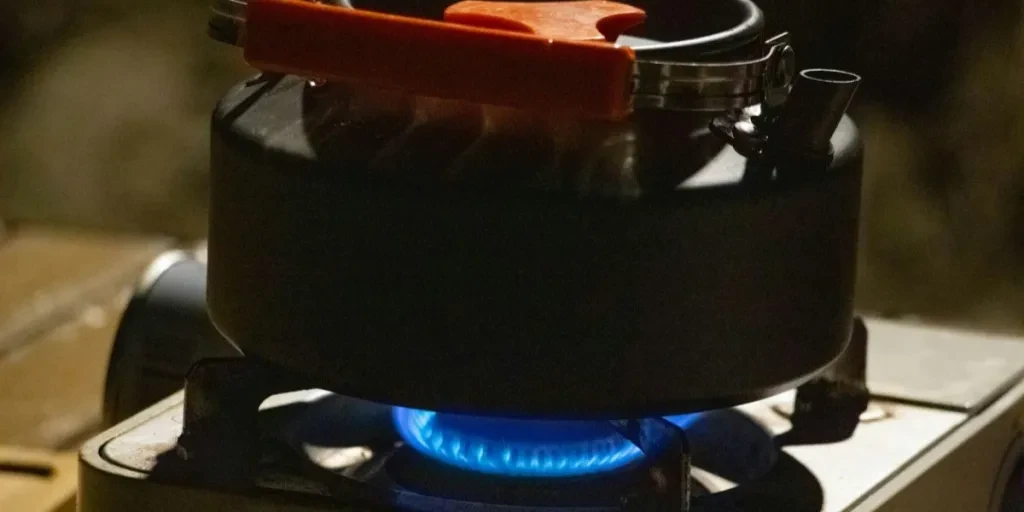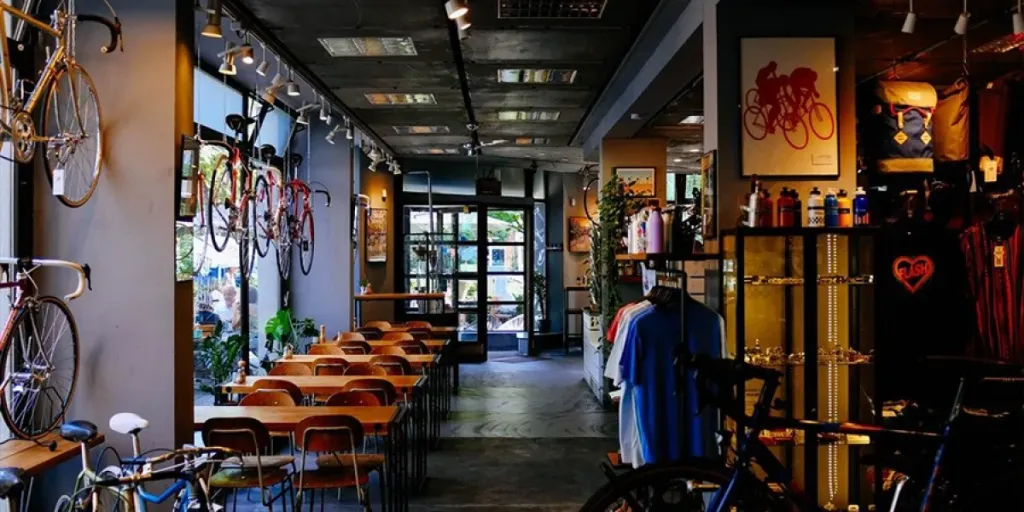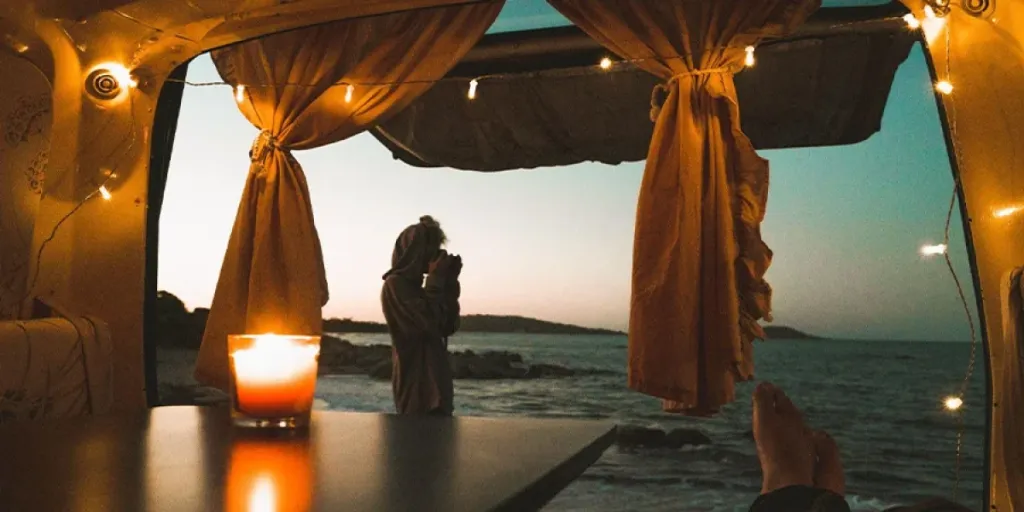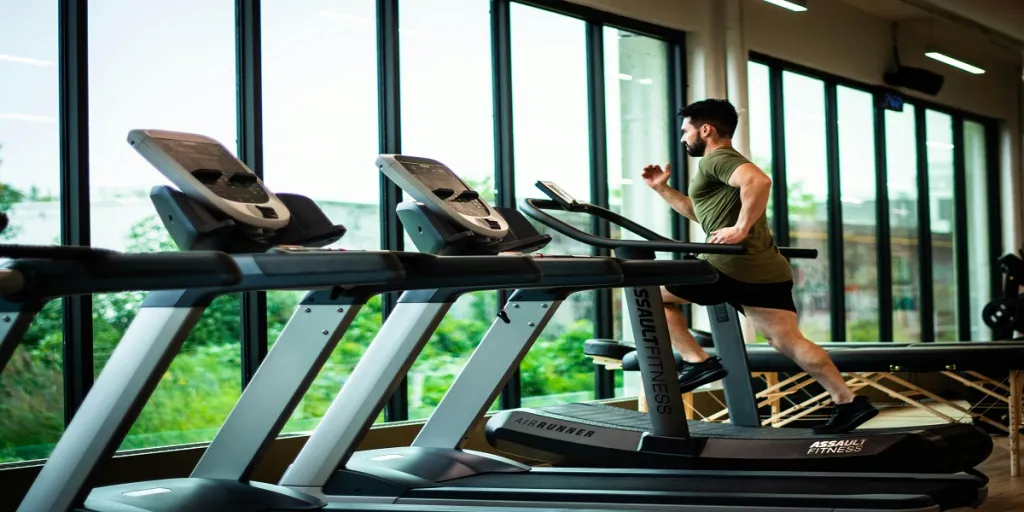Spending time in the great outdoors comes hand in hand with summertime. Having the right camping stove is essential for making memorable meals and avoiding a frustrating cooking experience. Whether the camping stove is used for a family camping trip, a remote expedition, or a weekend hike or beach trip, there’s a certain style of stove to match every preference.
Keep reading to find out how to choose the best camping stove for all types of outdoor situations in the summer months.
Table of Contents
Global market value of camping stoves
How to choose the right camping stove
Boil time and heat output
Cooking needs
Weather conditions
Weight and portability
Different types of camping stoves
Wood-burning stove
Canister stove
Tabletop propane stove
Alcohol stove
Final thoughts
Global market value of camping stoves

There’s a lot of camping gear on the market that can greatly enhance the outdoor experience. Camping stoves in particular have become an essential tool among outdoor enthusiasts due to their user-friendly features that enable campers to cook their meal in a timely fashion.
Increasing amounts of people are spending time outdoors, participating in activities such as hiking and camping. The outdoor tourism sector is set to further drive demands for equipment such as camping stoves thanks to their powerful performance.
In 2024, the global market value of camping stoves reached USD 540.8 million. This number is expected to grow by a compound annual growth rate (CAGR) of 4.5% between 2025 and 2034. This will bring the total market value up to approximatley USD 839.8 million by the end of this period.
How to choose the right camping stove

There are a number of factors buyers will take into account when purchasing a camping stove. This includes things like brands, usage scenarios, and boiling efficiency (just to name a few).
According to Google Ads, “camping stove” had an average monthly search volume of 135,000 in 2024. The most searches appeared in August when they exceeded 200,000 and the least searches appeared in March when they dropped to only 90,500. Regardless of the ups and downs of this search trend, it’s very evident that camping stoves are a hot topic throughout the year.
Here are some of the most important considerations when choosing which camping stove is the best fit.
Boil time and heat output

Boil time and heat output are among the most important factors when selecting a camping stove. Heat output is measured in British Thermal Units (BTUs), and a higher rating means that the stove will boil water quicker. This can be useful in cold temperatures or high altitudes. However, this comes at the cost of needing more fuel, so it’s important that buyers know how to balance power with efficiency based on the length of their trip and the availability of fuel.
Using a camping stove with an adjustable flame will allow the user to switch between simmering and rapid boiling to suit various cooking needs. Lightweight backpacking stoves from brands such as Jetboil and MSR are designed with fuel optimization in mind, with some models being able to boil water in under 2 minutes.
Cooking needs

Cooking needs should be a guideline for the stove size, features, and number of burners, as not every stove is designed to suit all scenarios. For example, backpackers or lightweight campers will want compact single-burner stoves, such as the Jetboil Flash, which can easily be used to cook quick meals.
For group cooking or more elaborate meals, using a two-burner stove such as the Coleman Classic offers more versatility and space for using multiple pots at once. Additional features such as simmer control and griddles are ideal for gourmet cooking as well.
When choosing the right camping stove, it’s important to take into account the number of people being cooked for, the types of meals, and how much gear can easily be carried to the destination.
Weather conditions

Weather conditions play a big role in choosing a camping stove to use. It’s vital that buyers understand how weather conditions can impact the performance of a stove, and that they know which models are most suited for each climate.
For high-altitude or cold weather, liquid fuel stoves are the safest and most reliable option. Brands such as Primus and Optimus have a good selection of these stoves, and they’re known for maintaining consistent pressure despite colder temperatures.
In windy conditions, integrated canister systems are a good option as they’re known for their precise flame control and resistance to wind. The SOTO WindMaster is a popular choice among buyers, as are stoves from Kovea, which offer durability and a stable performance in all weather conditions.
Camping in challenging conditions requires the use of stoves that have effective wind protection, a good fuel system that can perform in low temperatures, and a robust construction.
Weight and portability

Both weight and portability are crucial factors to take into consideration when choosing the best camping stove. Minimalist stoves like the BRS-3000T weigh under 1 oz but still offer a good performance. This makes them a good option for solo treks. But for people willing to carry heavier gear, stoves like the Optimus Crux can offer better functionality and stability while still being portable.
Those who are camping and don’t have weight restrictions will want to look at larger, two-burner stoves that offer more cooking power and flexibility, like the Eureka Ignite Plus.
Different types of camping stoves

There are several types of camping stoves that are popular among buyers. Each type of stove comes with its own set of pros and cons, and some are better suited to certain outdoor adventures than others.
Keep reading to learn more about the most popular types of camping stoves as well as their key features.
Wood-burning stove

Wood-burning camping stoves are among the best camping stoves for those who want to avoid carrying heavy canisters and extra bags around with them. This type of camping stove uses natural materials such as twigs and pinecones for fuel, so not only do they offer ease of use, they’re eco-friendly too.
Most wood-burning stoves are designed to be lightweight, so they can be carried long distances without any hindrance. Some models are even collapsible for easy storage. Buyers will look for key features such as air vents, wind protection, built-in grates, and even USB charging options for models that convert heat into electricity.
The only downside to wood-burning stoves for camping is that they require some knowledge of fire-building to operate. Users will also need to take into account weather conditions and local fire regulations.
Canister stove

The canister stove is a great stove for campers looking for a convenient way to cook outdoors. Canister freestanding stoves run on pre-pressurized fuel canisters that offer a quick setup by easily screwing onto the stove. With the push of a button, the canister will ignite the ultra-lightweight stove.
These camping stoves are known for being highly efficient and lightweight, creating a fast boiling time that can be adjusted using a flame control switch. More advanced models will have integrated pot systems or windshields built into them so that they can perform even in windy conditions or high altitudes. The addition of a travel case is also a good thing to have available.
Tabletop propane stove

The tabletop propane stove is a good choice when weight isn’t a big concern, such as for family adventures or car camping. These camping stoves often feature at least two burners, with precise flame control and plenty of surface area for cooking. This makes tabletop propane stoves the best option for preparing a variety of meals while at a campsite, and the stability offered is unmatched.
Many models will include additional features such as windshields, removable grates, grill accessories, and push-button ignition to add to the versatility of the stove. It’s important to note that tabletop propane stoves run on larger propane tanks, as big as 20 lbs in some cases, so users will have enough fuel for extended trips or for use during large gatherings.
Alcohol stove

Although alcohol stoves aren’t as popular for camping as other stove types, they’re still a must-have item among ultralight backpackers, solo backpackers, and hikers. These stoves are known for their reliability as well as their simplicity, as they burn denatured alcohol or other fuels that can be easily found in the majority of outdoor stores. People looking for a handy portable cook stove have the complete cook system with this tiny stove.
Alcohol stoves for camping are extremely lightweight and compact, generally as small as a metal cup, and they have no moving parts. This makes it very difficult for them to fail, although the speed cook times are slower than those offered by canister stoves.
Final thoughts
Knowing how to choose the best camping stove for certain outdoor adventures comes with a lot of considerations. Not all camping stoves are designed for every setting, and buyers will have their own preferences too, based on what features they find the most appealing. Whether cooking gourmet meals for the family or using a lightweight camping stove for a quick meal is the main goal, there’s something for every outdoor enthusiast in today’s market.




